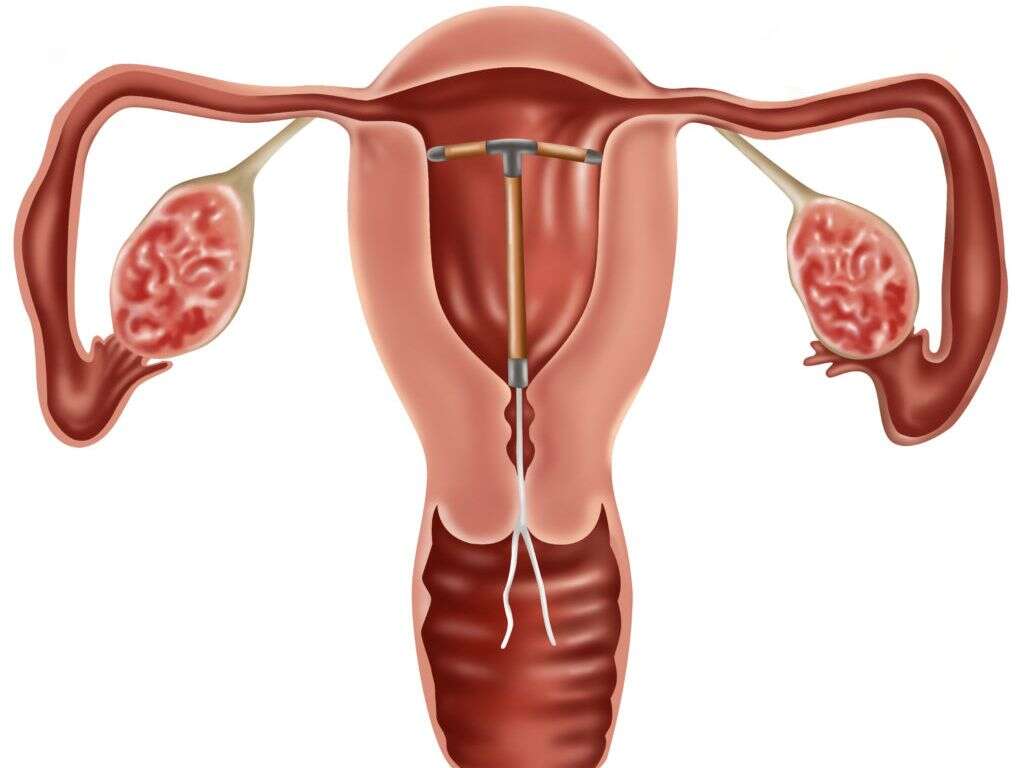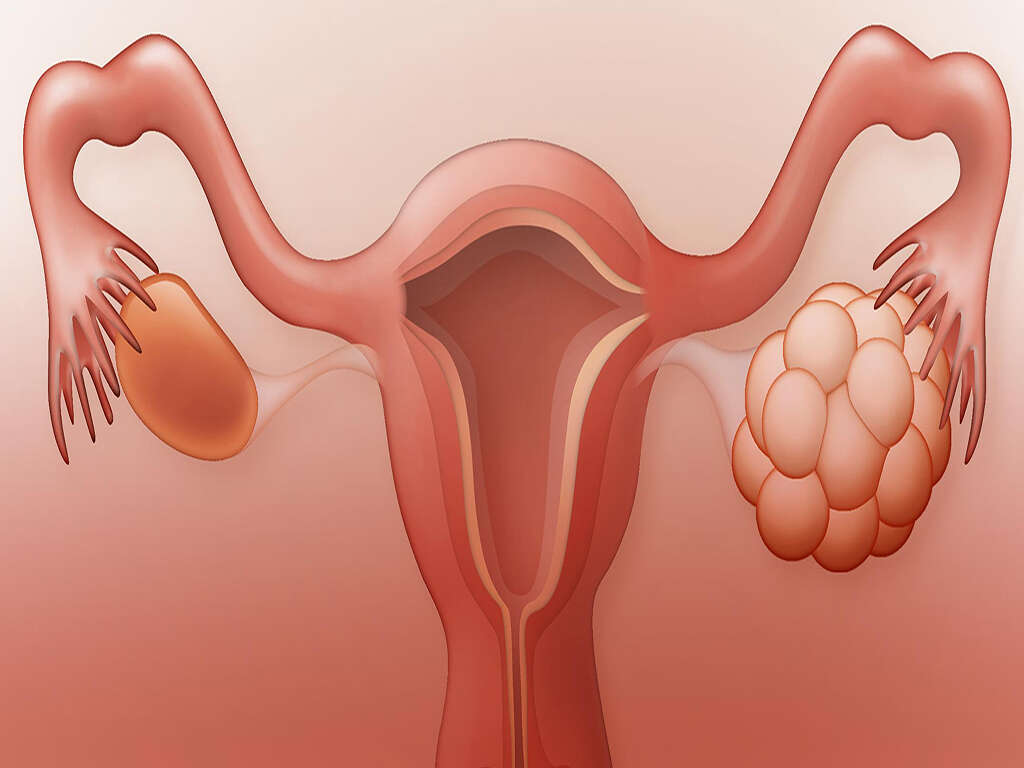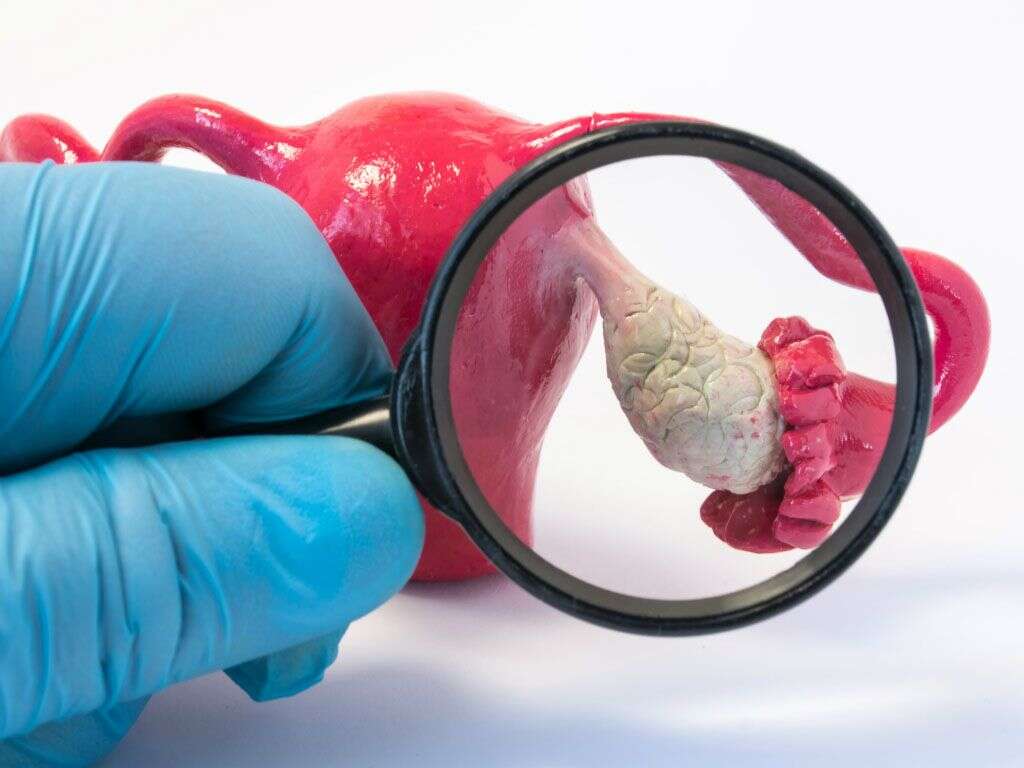Polycystic Ovary Syndrome Symptoms
 Article Sources
Article Sources
- 1. Aboud AL AM, Zito PM. Alopecia. [Updated 2020 Jun 29]. In: StatPearls [Internet]. Treasure Island (FL): StatPearls Publishing; 2020 Jan-. Available from: https://www.ncbi.nlm.nih.gov/books/NBK538178/
- 2. Gibson E, Mahdy H. Anatomy Abdomen and Pelvis, Ovary. [Updated 2019 Aug 10]. In: StatPearls [Internet]. Treasure Island (FL): StatPearls Publishing; 2020 Jan-. Available from: https://www.ncbi.nlm.nih.gov/books/NBK545187/
- 3. Harris, H R et al. “Long and irregular menstrual cycles, polycystic ovary syndrome, and ovarian cancer risk in a population-based case-control study.” International journal of cancer vol. 140,2 (2017): 285-291. doi:10.1002/ijc.30441
- 4. Johansson, Julia, and Stener-Victorin, Elisabeth. “Polycystic ovary syndrome: effect and mechanisms of acupuncture for ovulation induction.” Evidence-based complementary and alternative medicine : eCAM vol. 2013 (2013): 762615. doi:10.1155/2013/762615
- 5. Keen, Mohammad Abid et al. “Cutaneous Manifestations of Polycystic Ovary Syndrome: A Cross-Sectional Clinical Study.” Indian dermatology online journal vol. 8,2 (2017): 104-110. doi:10.4103/2229-5178.202275
- 6. Legro RS. Evaluation and Treatment of Polycystic Ovary Syndrome. [Updated 2017 Jan 11]. In: Feingold KR, Anawalt B, Boyce A, et al., editors. Endotext [Internet]. South Dartmouth (MA): MDText.com, Inc.; 2000-. Available from: https://www.ncbi.nlm.nih.gov/books/NBK278959/
- 7. Ndefo, Uche Anadu et al. “Polycystic ovary syndrome: a review of treatment options with a focus on pharmacological approaches.” P & T : a peer-reviewed journal for formulary management vol. 38,6 (2013): 336-55.
- 8. Pandey A, Sonthalia S. Skin Tags. [Updated 2020 Jun 1]. In: StatPearls [Internet]. Treasure Island (FL): StatPearls Publishing; 2020 Jan-. Available from: https://www.ncbi.nlm.nih.gov/books/NBK547724/
- 9. Rasquin Leon LI, Mayrin JV. Polycystic Ovarian Disease (Stein-Leventhal Syndrome) [Updated 2019 Dec 8]. In: StatPearls [Internet]. Treasure Island (FL): StatPearls Publishing; 2020 Jan-. Available from: https://www.ncbi.nlm.nih.gov/books/NBK459251/
- 10. Spritzer PM, Barone CR, Oliveira FB. Hirsutism in Polycystic Ovary Syndrome: Pathophysiology and Management. Curr Pharm Des. 2016;22(36):5603-5613. doi:10.2174/1381612822666160720151243
10. Irregularities with Ovulation
Ovulation will occur around the 14th day of a typical 28-day menstrual cycle. This knowledge is an excellent tool for people trying to become or trying to avoid becoming pregnant. Some women may be able to identify when they are ovulating based on the symptoms that they experience such as sharp pain on one side of the lower abdomen where an ovary is located and perhaps light spotting. There exist irregularities as to when ovulation actually occurs and sometimes ovulation may not happen at all. At times, there is nothing to worry about, but if this is a frequent occurrence then it is important to get help figuring out why in order to avoid possible future infertility problems.
Irregularities or lack of ovulation is a very common sign of PCOS and also helps to identify the syndrome.7Ndefo, Uche Anadu et al. “Polycystic ovary syndrome: a review of treatment options with a focus on pharmacological approaches.” P & T : a peer-reviewed journal for formulary management vol. 38,6 (2013): 336-55. The reasoning behind issues with ovulation is due to, you guessed it, high levels of testosterone, and also some other factors.4Johansson, Julia, and Stener-Victorin, Elisabeth. “Polycystic ovary syndrome: effect and mechanisms of acupuncture for ovulation induction.” Evidence-based complementary and alternative medicine : eCAM vol. 2013 (2013): 762615. doi:10.1155/2013/762615
Advertisement









